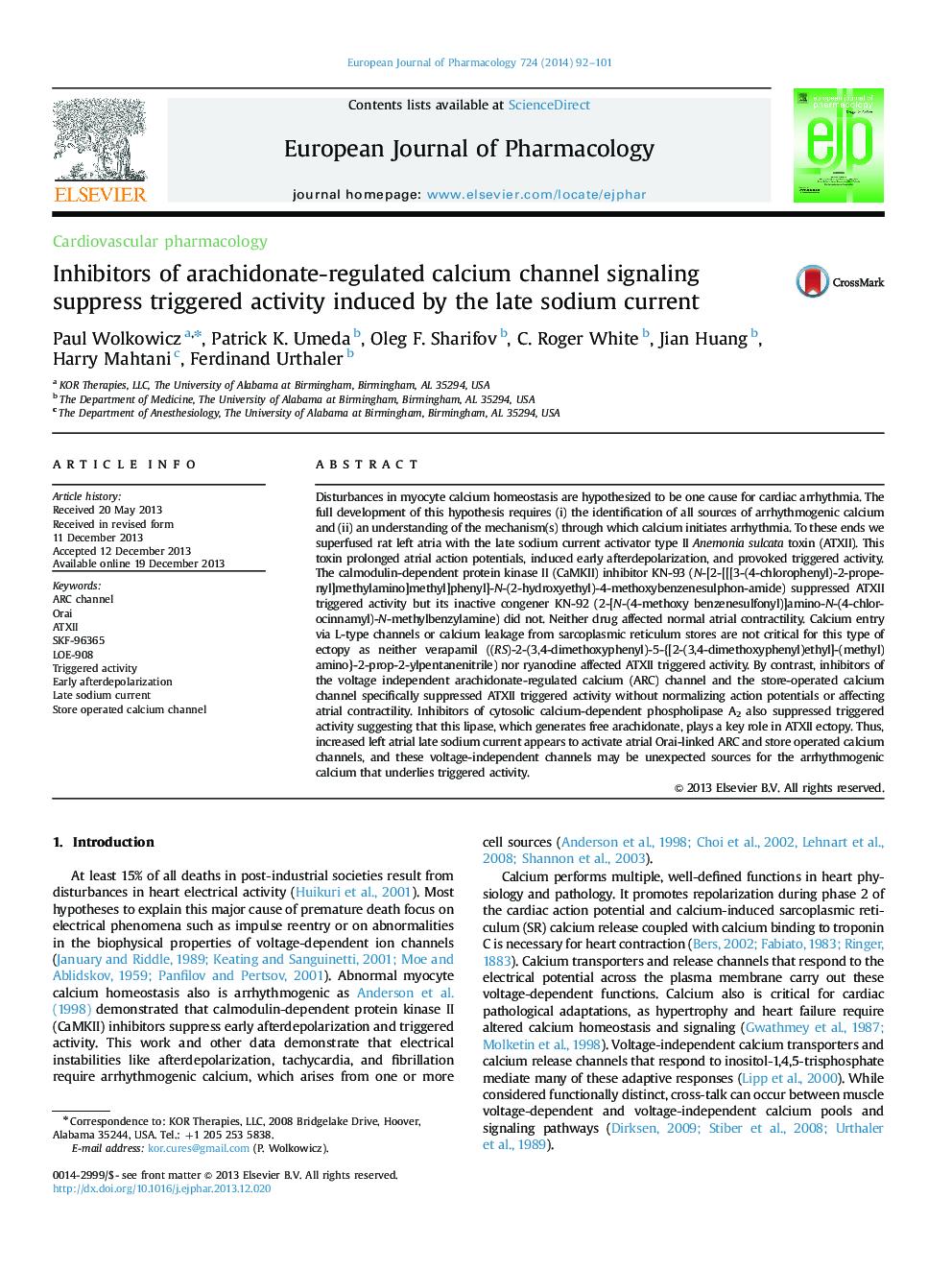| Article ID | Journal | Published Year | Pages | File Type |
|---|---|---|---|---|
| 2531822 | European Journal of Pharmacology | 2014 | 10 Pages |
Disturbances in myocyte calcium homeostasis are hypothesized to be one cause for cardiac arrhythmia. The full development of this hypothesis requires (i) the identification of all sources of arrhythmogenic calcium and (ii) an understanding of the mechanism(s) through which calcium initiates arrhythmia. To these ends we superfused rat left atria with the late sodium current activator type II Anemonia sulcata toxin (ATXII). This toxin prolonged atrial action potentials, induced early afterdepolarization, and provoked triggered activity. The calmodulin-dependent protein kinase II (CaMKII) inhibitor KN-93 (N-[2-[[[3-(4-chlorophenyl)-2-propenyl]methylamino]methyl]phenyl]-N-(2-hydroxyethyl)-4-methoxybenzenesulphon-amide) suppressed ATXII triggered activity but its inactive congener KN-92 (2-[N-(4-methoxy benzenesulfonyl)]amino-N-(4-chlorocinnamyl)-N-methylbenzylamine) did not. Neither drug affected normal atrial contractility. Calcium entry via L-type channels or calcium leakage from sarcoplasmic reticulum stores are not critical for this type of ectopy as neither verapamil ((RS)-2-(3,4-dimethoxyphenyl)-5-{[2-(3,4-dimethoxyphenyl)ethyl]-(methyl)amino}-2-prop-2-ylpentanenitrile) nor ryanodine affected ATXII triggered activity. By contrast, inhibitors of the voltage independent arachidonate-regulated calcium (ARC) channel and the store-operated calcium channel specifically suppressed ATXII triggered activity without normalizing action potentials or affecting atrial contractility. Inhibitors of cytosolic calcium-dependent phospholipase A2 also suppressed triggered activity suggesting that this lipase, which generates free arachidonate, plays a key role in ATXII ectopy. Thus, increased left atrial late sodium current appears to activate atrial Orai-linked ARC and store operated calcium channels, and these voltage-independent channels may be unexpected sources for the arrhythmogenic calcium that underlies triggered activity.
